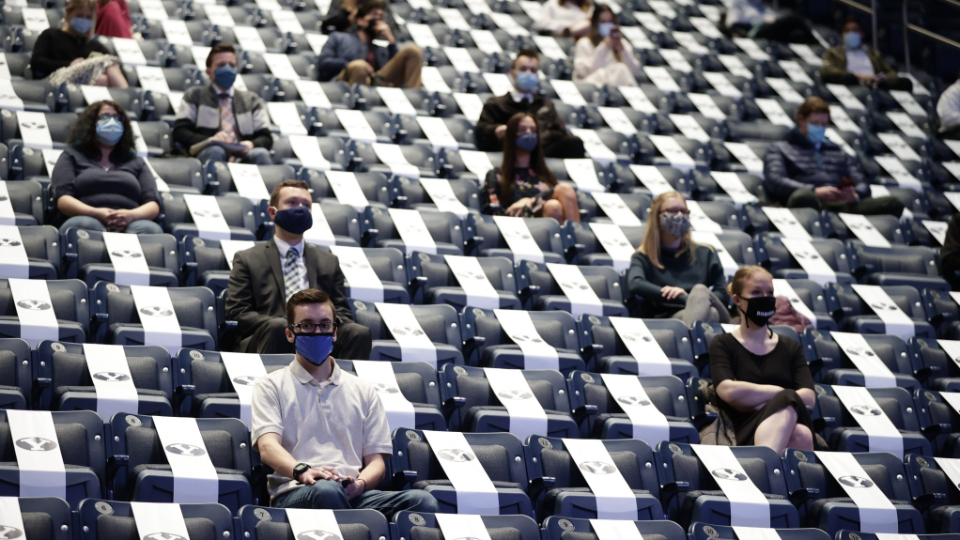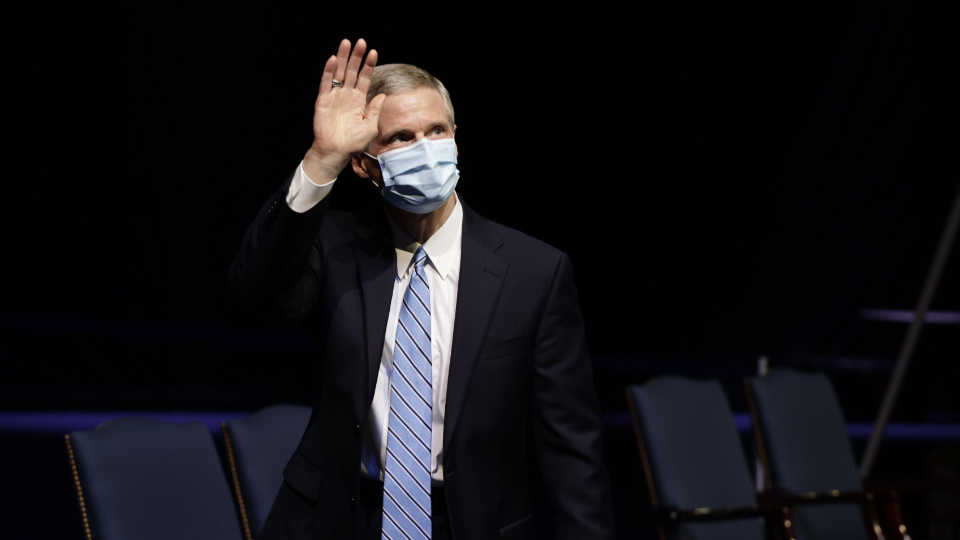(For Non-Muslim Use Only)
Two threads—one of challenges, the other of faith and miracles—run through the history of The Church of Jesus Christ of Latter-day Saints, connecting those in the faith’s beginning decades with the millions who belong to the Church today.
In a Brigham Young University (BYU) devotional address Tuesday, Elder David A. Bednar of the Quorum of the Twelve Apostles described the similarities between what Latter-day Saints experienced in the Nauvoo Temple in 1846 with what Church members experienced in temples in North America late last year.
The construction of and worship within the temple in Nauvoo, Illinois, in the 1840s was the result of significant sacrifice and struggle for early Latter-day Saints. After the temple was completed and before they were forced to go west, Brigham Young personally worked around the clock with little sleep to help his fellow Saints be blessed by temple worship before their arduous journey across the Plains.
Elder Bednar told BYU students that the power to endure hardship for those Latter-day Saints came from their faith in Jesus Christ and the immeasurable blessings of worship within temples—what Brigham Young called the “fire of the covenant.”
- BYU-Devo-Elder-David-A-Bednar
- BYU-Devo-Elder-David-A.-Bednar
- BYU-Devo-Elder-David-A-Bednar
- BYU-Devo-Elder-David-A.-Bednar
- BYU-Devo-Elder-David-A.-Bednar
- BYU-Devo-David-A-Bednar
- BYU-Devo-Elder-David-A.-Bednar
- BYU-Devo-Elder-David-A.-Bednar
- BYU-Devo-Elder-David-A.-Bednar
- BYU-Devo-Elder-David-A.-Bednar
| Temple Square is always beautiful in the springtime. Gardeners work to prepare the ground for General Conference. © 2012 Intellectual Reserve, Inc. All rights reserved. | 1 / 2 |
“Sacred covenants, priesthood ordinances, the ‘fire of the covenant’ and the power of godliness are central to understanding the breadth, depth and reach of the migration of Latter-day Saints from Nauvoo to the Great Salt Lake Valley,” the Apostle said. “And the lessons learned in Nauvoo and along the trails as the Saints traveled West continue to bless us to this very day.”
Elder Bednar pointed to miracles experienced by Latter-day Saints in the second week of November 2020 in several temples in North America. On November 10, government officials in a large jurisdiction announced a new wave of pandemic-induced restrictions that would be implemented three days later and would suspend religious gatherings for a minimum of three weeks.
Wanting to give as many people as possible the opportunity to worship in temples before they closed, these temple leaders prayerfully decided to keep their temples operating — doors open, lights on, night and day, nonstop — until they would close on Friday, November 13, at midnight. Making this around-the-clock operation a reality would require meticulous planning and ample volunteers from local Latter-day Saints.
Elder Bednar shared comments from eight Church members that give insight into what they viewed as the miraculous nature of that 72-hour period inside these temples.
Some described miracles in making appointments for so many people in so little time. “When I started calling patrons … I completely expected to leave messages,” one person said. “Almost everyone answered their phone. To me, [this was] a miracle. Almost all available time slots were filled in less than a day and a half.”

BYU-Devo-Elder-David-A-Bednar
Students at Brigham Young University gather at the Marriott Center on January 19, 2021, to hear from Elder David A. Bednar of the Quorum of the Twelve Apostles.Photo Courtesy of BYU“There was miracle after miracle,” another said, “miracles in scheduling, miracles in obtaining necessary paperwork to have ordinances [rites and ceremonies] completed, miracles in having one available appointment time precisely at the only time a patron was able to come.”
Others spoke of the look reflected on the faces of those who, instead of being weary from serving all night and morning, were miraculously full of joy and light.
“As I arrived at the temple on Thursday morning around 5:00 a.m., I saw ordinance workers who had served all night long still smiling as they served,” one person said. “One brother stayed at the temple day and night, not going home for three days. His service was invaluable and needed in so many ways.”
Several noted the deep connection they felt with the early Saints of Nauvoo.
“There are many challenges and experiences we face in life, and sometimes [we] wonder if we are or ever do ‘enough,’” one person said. “Some of them are once in a lifetime that we read about or hear that someone else has experienced. Serving in the temple during the middle of the night, as the Nauvoo pioneers of old, was one of those treasured once-in-a-lifetime opportunities. Our entire shift [of volunteers in the temple] was in awe of the light that shone in the eyes of the patrons that came and their gratitude and touched by the sacrifice and the privilege it was for us as workers to serve them in this way.”

BYU-Devo-Elder-David-A.-Bednar
Elder David A. Bednar of the Quorum of the Twelve Apostles speaks to students at Brigham Young University in the Marriott Center on January 19, 2021.Photo Courtesy of BYU“The Day of Miracles Has Not Ceased”
Elder Bednar said he is sometimes asked by Latter-day Saints why we do not have “mighty miracles” today as they did in the early days of the Church.
“My answer always is the same: ‘We do!’” the Apostle said. “The faith-filled events in Nauvoo in February of 1846 and in North America in November of 2020 are stunningly similar.”
These miracles are rooted in the covenants, or promises, Latter-day Saints make in temples, Elder Bednar said. Such covenants are made in ceremonies that teach the purpose of life and unite families, past and present.
“The mighty miracles in our lives are exactly the same today as they always have been for devoted disciples of the Lord Jesus Christ,” Elder Bednar said. “The identical spirit that drew Latter-day Saints to the temple in Nauvoo clearly was at work in November of last year. And it is operating today and will continue into the future. The day of miracles has not ceased.”
“No unhallowed hand and no pandemic can keep the Lord’s holy work from progressing,” he concluded. He promised Latter-day Saints that “as you honor your covenants and strive to discern with ‘an eye of faith’ (Ether 12:19), your spiritual vision will be magnified and refined to help you learn that the seemingly small miracles in your life will be mightiest and most impactful of all.”
